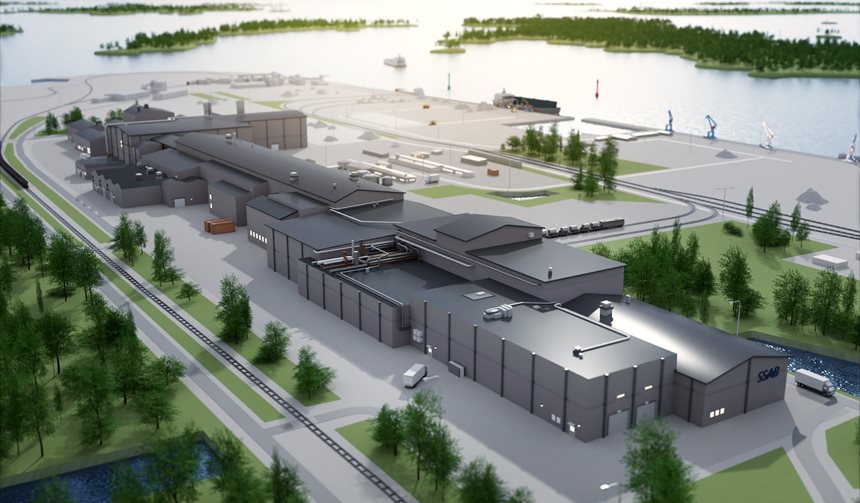New steel plant in Luleå by 2028

LULEÅ SSAB’s Board of Directors has decided that the next step in the company’s transition will be to build a state-of-the-art fossil-free mini-mill in Luleå.
SSAB’s plans to build new steelworks in Luleå and Raahe in Finland have been known for a long time, but the question was whether Luleå or Raahe in Finland should come first.
Luleå was chosen because Raahe’s current equipment is more modern and in better condition. The investment in Luleå, totalling EUR 4.5 billion, means that SSAB will not have to invest EUR 2 billion in its existing facilities over the next ten years. The investment is being made with the company’s own cash flow within its financial targets.
A necessary condition for the choice of Luleå is also that it recently secured electricity supplies from the state energy supplier Vattenfall.
The new steel mill will have a capacity of 2.5 million tonnes per year and the investment consists of two electric arc furnaces, ladle metallurgy, an integrated rolling mill to produce special steels and a cold rolling and galvanising facility to sell premium products to the automotive industry. To date, SSAB has entered into 55 partnerships with leading customers.
The new steel plant will use a mixture of fossil-free sponge iron from the Hybrits demonstration plant in Gällivare and recycled steel scrap as raw material.
SSAB has already decided to build a new steel plant in Oxelösund, which will remove 3% of Sweden’s total carbon dioxide emissions. With the new plant in Luleå SSAB will reduce a total of 10% of the country’s emissions.
“The transformation of Luleå is a major step on our journey to fossil-free steel production. We will remove 7% of Sweden’s carbon dioxide emissions, strengthen our competitive position and safeguard jobs with the most cost-effective and sustainable strip production in Europe,” says SSAB’s President and CEO Martin Lindqvist.
The new steel mill is expected to be operational by the end of 2028 and reach full capacity one year later. Environmental permits are expected towards the end of 2024.
As a third step, a conversion of Raahe in Finland is planned. The timing of this project depends on SSAB’s financing and implementation capacity and the lessons learnt from the project in Luleå.
On the profitability of the investment, SSAB writes in a press release:
“The investment will result in significant value creation. Compared to the current system the yearly EBITDA improvement is estimated to be more than SEK 5 billion/year at current commodity forecasts. The new mini-mill will have a better cost position with lower fixed costs, higher efficiency, shorter lead times and eliminated CO2 costs. The mill design includes a production increase of 0.5 mton/year, a mix improvement with 1 mton/year increase of special and premium steel grades.”
Lennart Håkansson
ed****@no*****************.com